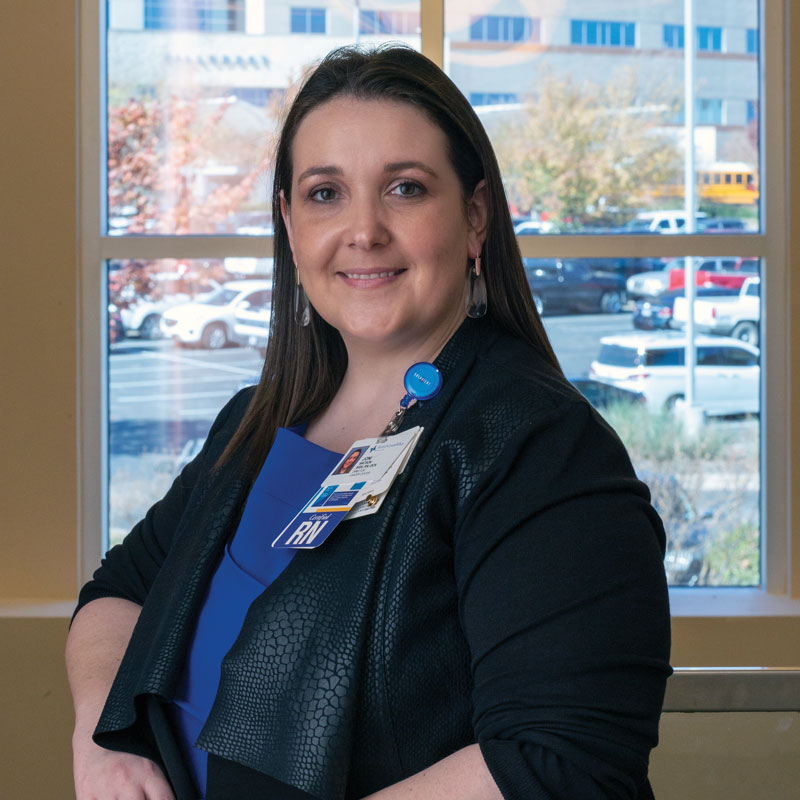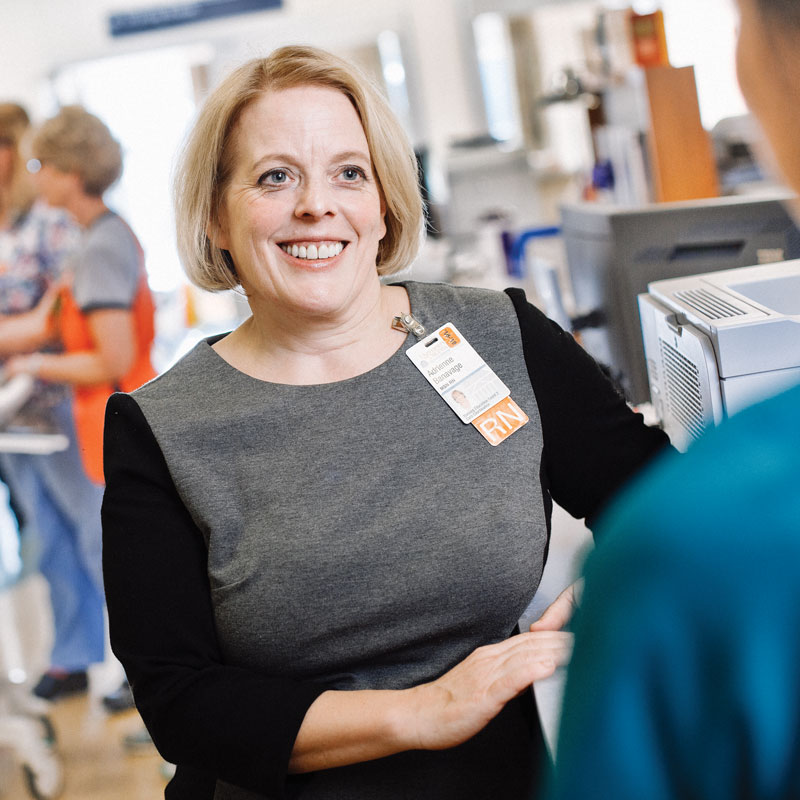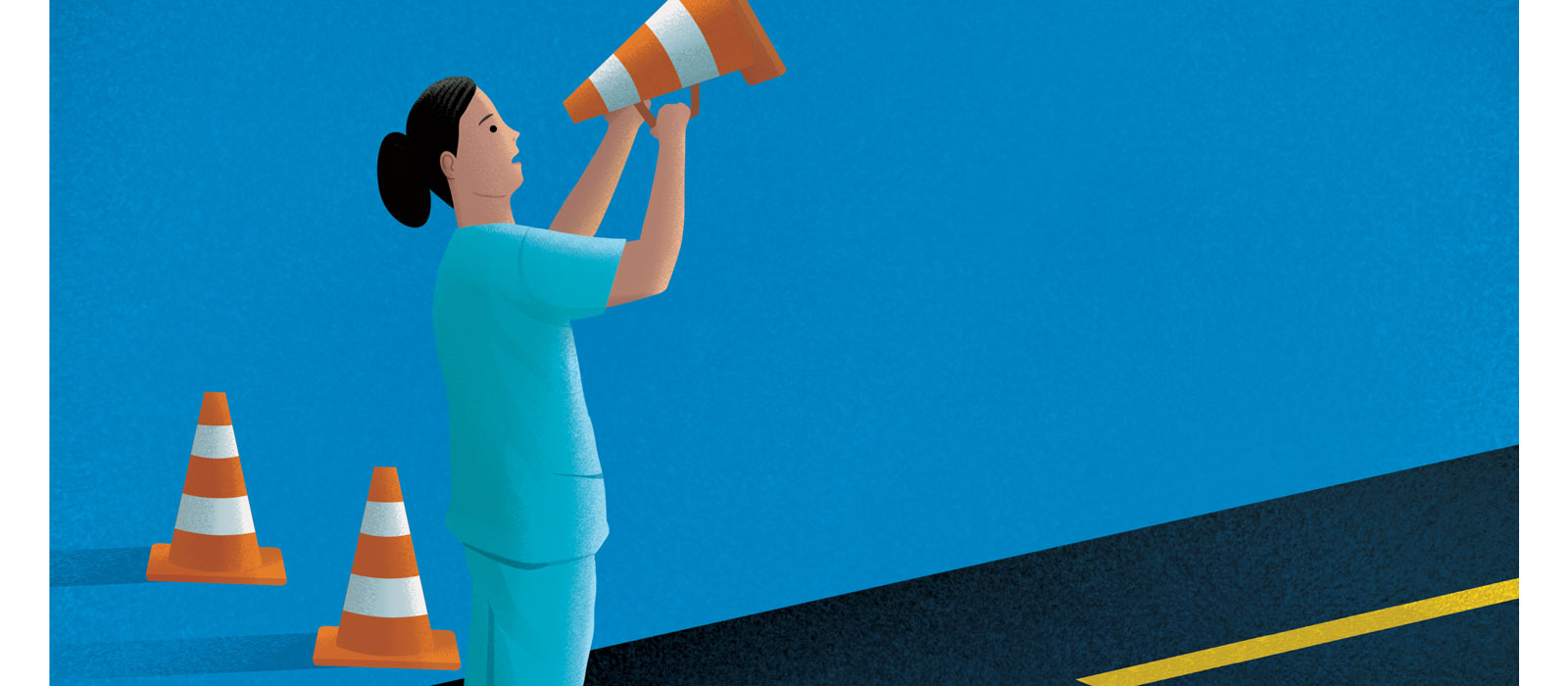Despite flashy television campaigns, countless pamphlets and brochures, and seemingly constant reminders, people are still unaware of important cancer prevention information.
The World Health Organization estimated that 30%–50% of all cancer cases are preventable. But between modifiable behaviors, hereditary and genetic risks, infectious agents, and more, the general public finds itself mostly unprepared to tackle the cancer prevention conversation.
As educators, medical liaisons, and disease experts, oncology nurses are central to cancer prevention efforts. Whether it’s through preventing current patients from developing secondary cancers or lending expertise to community initiatives, oncology nurses have the voice and clinical experience to further cancer prevention methods—and many are doing just that.

The Role of Oncology Nurses in Cancer Prevention
ONS member Joni Watson, MSN, MBA, RN, OCN®, director of the Baylor Scott and McClinton Cancer Center in Waco, TX, says that nurses are key to the cancer prevention conversation.
“Oncology nurses have a tremendous role in cancer prevention—not only to follow cancer prevention primary and secondary screening recommendations, but to also help educate others about the importance of prevention,” Watson says. “The term ‘others’ can be a broad category, but it includes everyone from patients and family members to other nurses in all fields of practice to providers to community organizations.”
Nurses have the responsibility and power to advance cancer prevention efforts, ONS member Adrienne Banavage, RN, nursing education coordinator at the Emily Couric Cancer Center at the University of Virginia Health Systems in Charlottesville, VA, says.
“One of the most valuable tools oncology nurses have in their arsenal is the ability to build deep professional relationships with their patients and family members, along with other caregivers,” Banavage says. “Using our cancer-specific expertise and experience, along with the ability to build those trusting relationships, oncology nurses can convey the importance of cancer prevention across countless different settings.”

Some providers might dismiss prevention tactics for currently diagnosed patients because it seems like a secondary issue to current care and treatment. However, providing patients with prevention information can be a boon for a number of reasons.
“It’s always a good time to think about and discuss cancer prevention, no matter if a patient has just been diagnosed or is in long-term survivorship. Increasing quality of life is always the aim,” Watson says. “We can’t lose sight of the rest of the body while focusing on a particular area or cancer, and evidence-based practices for primary prevention are available at every phase of the care continuum. Often, patients feel a loss of control with their cancer diagnoses. Focusing on prevention methods like modifying tobacco use, nutritional intake, and physical activity levels can give patients some control.”
Getting Involved in Community Cancer Prevention
With funding from the Oncology Nursing Foundation, Banavage and her colleagues created a skin cancer awareness program called UVigilant: Illuminating Skin Cancer Prevention that reached community members at the local city market. With a specialized ultraviolet camera, her team photographed a person’s skin and highlighted the impacts of sun damage in the picture.
During those conversations, Banavage and her team provided skin cancer prevention strategies, future screening methods, and follow-up recommendations for the members of her community. Ultimately, it created a healthy conversation with people who were unaware of cancer risks.
“For community outreach—whether that means within your geographic region or within your social circles—oncology nurses have an obligation to create forums where cancer prevention conversations can happen,” Banavage says. “We encountered that with our UVigilant program. It was focused on sun safety, but it created the opportunity to have those conversation more than anything else. That’s part of our responsibility as nurses, to have those conversations and share that information.”
Providing clinical expertise through a community program is one of many ways to share prevention information with people who aren’t currently in the healthcare system. If creating a community-wide program isn’t possible, consider smaller ways to spread the word.
“When the colorectal cancer screening guidelines and human papillomavirus vaccination age indications recently changed, the first thing I did was reach for my phone to share this information with people who’ve never been my patients and who I hope never will be,” Watson says. “With all of the social media channels available today, your regular social networks are a great way to spread cancer prevention and early detection information to people other than your patients. Similarly, traditional media outlets—newspapers, television, radio—are also a great way to spread prevention information. Don’t discount the power of your nursing voice!”
Watson and Banavage agree that nurses can make an impact on a person-to-person level through daily interactions in their immediate community.
“Whether it’s during the game at the local ball field, talking with your daughter’s teacher, worshipping alongside others, or chatting in the grocery store, nurses can find a place to share evidence-based cancer prevention screening information,” Watson encourages. “Nurses can get involved with regional political organizations that influence local health care. For example, if nurses do not have smoke-free ordinances in their areas, starting a grassroots effort can lead to powerful, long-term change in their community. Nurses shouldn’t underestimate the power of their voices.”
Overcoming Cancer Prevention Pitfalls
Cancer prevention messaging is a great first step, but it means little if people don’t follow up with assessments. Developing interprofessional teams for collaboration is one way nurses can ensure that the prevention message stays alive—both in and out of oncology settings.
“Creating partnerships with others on the healthcare team is a big part of prevention efforts. Making sure that people are hearing about prevention and early detection at different touch points in their lives can be hugely beneficial,” Banavage says. “For our team, we brought together a team of people with varying areas of expertise, so that we could complement each other and provide different perspectives.”
Some oncology nurses may feel reserved about having prevention conversations with people for many reasons, but nurses shouldn’t feel as though they need to be the pinnacle of health or experience to share vital cancer prevention tactics with others.
“Just like oncology treatments, cancer prevention guidelines are rapidly changing. Nurses may feel less informed than they’d prefer,” Watson says. “In addition, nurses may feel like they cannot adequately share information on tobacco use, nutrition, or physical activity if they themselves use tobacco or have an increased body mass index. Although these are barriers to sharing cancer prevention education and information, nurses can overcome them, especially considering the benefit prevention discussions provide.”
Owning the Cancer Prevention Conversation
“Because of our relationships and the trust with our patients and the community, oncology nurses need to recognize what a powerful platform we have,” Banavage says. “The risks are out there, and it’s up to nurses to do their part—at all levels—to make sure people are educated and ready to engage in cancer prevention.”
Through cancer prevention conversations, oncology nurses can have a huge impact on the future of public health. Although the immediate benefits are difficult to observe, cancer prevention helps nurses save lives on a macro level.
“Nurses are in a prime position to own cancer prevention discussions in their practices and communities,” Watson says. “We are the most trusted and respected healthcare professionals in the United States. Although it seems like people should know much of the cancer prevention information already, they don’t. And they surely don’t put it into practice like they should. Nurses can be consistent educators and encouragers; we’re in every segment of the community and can reach every part of the population.”






